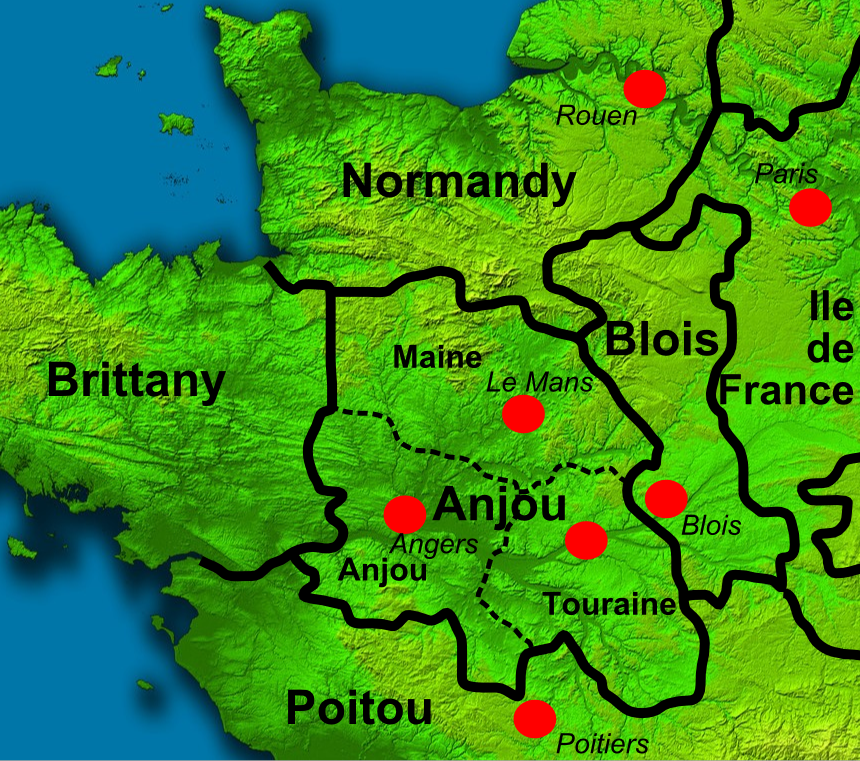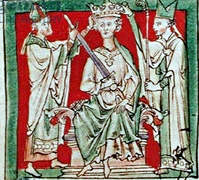|
Leonard Stanley Priory
Leonard Stanley Priory was a priory in Gloucestershire, England. Over the years following the dissolution most of the buildings of the priory complex have been destroyed. Leonard Stanley is a small village situated about southwest of the town of Stroud in Gloucestershire. A priory dedicated to Leonard of Noblac, St Leonard was founded there by the Berkeley family in about 1130. This housed Austin Canons, Austin cannons, a secular order of Augustinians. In 1146, the priory was appropriated by Gloucester Abbey and became a Order of Saint Benedict, Benedictine cell until its dissolution in September 1538. The priory church, being of Augustinians, Augustinian origin, housed both the conventual and parish churches under a single roof. The church remains in use today as a parish church and is now known as St Swithun's church. On the western wall of the south transept corbel stones that supported the roof of the cloister are visible. Close to the south-west of the church, also exta ... [...More Info...] [...Related Items...] OR: [Wikipedia] [Google] [Baidu] |
Gloucestershire
Gloucestershire ( , ; abbreviated Glos.) is a Ceremonial counties of England, ceremonial county in South West England. It is bordered by Herefordshire to the north-west, Worcestershire to the north, Warwickshire to the north-east, Oxfordshire to the east, Wiltshire to the south, Bristol and Somerset to the south-west, and the Wales, Welsh county of Monmouthshire to the west. The city of Gloucester is the largest settlement and the county town. The county is predominantly rural, with an area of and a population of 916,212. After Gloucester (118,555) the largest distinct settlements are Cheltenham (115,940), Stroud (26,080), and Yate (28,350). In the south of the county, the areas around Filton and Kingswood, South Gloucestershire, Kingswood are densely populated and part of Bristol Built-up Area, Bristol built-up area. For Local government in England, local government purposes Gloucestershire comprises a non-metropolitan county, with six districts, and the Unitary authorities ... [...More Info...] [...Related Items...] OR: [Wikipedia] [Google] [Baidu] |
Slimbridge
Slimbridge is a village and civil parish near Dursley in Gloucestershire, England. It is best known as the home of the Wildfowl and Wetlands Trust's Slimbridge Reserve which was started by Sir Peter Scott. Canal and Patch Bridge The Gloucester and Sharpness Canal runs through the village, and under Patch Bridge which must be crossed to reach the Wildfowl Trust. Damage to the decking of Patch Bridge in October 2007 resulted in a temporary repair being made using steel plates. This had the effect of unbalancing the bridge, which warped and jammed on 23 October 2007. The swing bridge was replaced in early 2009. Nearby there is a caravan park and pub. The name of the bridge is echoed by the locals abandoning the "Tudor Arms" name and merely referring to the pub as "The Patch." https://www.thetudorarms.co.uk . On the canal towpath, next the bridge, is the Slimbridge Boat Station, which is a cafe, general store and boating resource centre. Church The village church of St Joh ... [...More Info...] [...Related Items...] OR: [Wikipedia] [Google] [Baidu] |
William Kingston
Sir William Kingston, KG ( – 14 September 1540) was an English courtier, soldier and administrator. He was the Constable of the Tower of London during much of the reign of Henry VIII. Among the notable prisoners he was responsible for was Queen Anne Boleyn, as well as the men accused of adultery with her. He was MP for Gloucestershire in 1529 and 1539. Life He was of a Gloucestershire family, settled at Painswick. William appears to have been a yeoman of the guard before June 1509. In 1512 he was an under-marshal in the army; went to the Spanish coast; was with Dr. William Knight in October of that year at San Sebastián, and discussed with him the course to be pursued with the disheartened English forces who had come to Spain under Thomas Grey, 2nd Marquess of Dorset. He fought at the battle of Flodden, was knighted in 1513, became sewer to the king, and later (1521) was a carver. He was appointed High Sheriff of Gloucestershire for 1514–15. He seems to have been wit ... [...More Info...] [...Related Items...] OR: [Wikipedia] [Google] [Baidu] |
Anne Boleyn
Anne Boleyn (; 1501 or 1507 – 19 May 1536) was List of English royal consorts, Queen of England from 1533 to 1536, as the Wives of Henry VIII, second wife of King Henry VIII. The circumstances of her marriage and execution, by beheading for treason, made her a key figure in the political and religious upheaval that marked the start of the English Reformation. Anne was the daughter of Thomas Boleyn, 1st Earl of Wiltshire, Thomas Boleyn (later Earl of Wiltshire), and his wife, Elizabeth Boleyn, Countess of Wiltshire, Elizabeth Howard, and was educated in the Seventeen Provinces, Netherlands and Kingdom of France, France. Anne returned to England in early 1522, to marry her cousin James Butler, 9th Earl of Ormond; the marriage plans were broken off, and instead, she secured a post at court as maid of honour to Henry VIII's wife, Catherine of Aragon. Early in 1523, Anne was secretly betrothed to Henry Percy, 6th Earl of Northumberland, Henry Percy, son of Henry Percy, 5th Ear ... [...More Info...] [...Related Items...] OR: [Wikipedia] [Google] [Baidu] |
Henry VIII
Henry VIII (28 June 149128 January 1547) was King of England from 22 April 1509 until his death in 1547. Henry is known for his Wives of Henry VIII, six marriages and his efforts to have his first marriage (to Catherine of Aragon) annulled. His disagreement with Pope Clement VII about such an annulment led Henry to initiate the English Reformation, separating the Church of England from papal authority. He appointed himself Supreme Head of the Church of England and dissolution of the monasteries, dissolved convents and monasteries, for which he was List of people excommunicated by the Catholic Church, excommunicated by the pope. Born in Greenwich, Henry brought radical changes to the Constitution of England, expanding royal power and ushering in the theory of the divine right of kings in opposition to papal supremacy. He frequently used charges of treason and heresy to quell dissent, and those accused were often executed without a formal trial using bills of attainder. He achi ... [...More Info...] [...Related Items...] OR: [Wikipedia] [Google] [Baidu] |
Tithe
A tithe (; from Old English: ''teogoþa'' "tenth") is a one-tenth part of something, paid as a contribution to a religious organization or compulsory tax to government. Modern tithes are normally voluntary and paid in money, cash, cheques or via online giving, whereas historically tithes were required and paid in kind, such as agricultural produce. Church tax linked to the tax system are used in many countries to support their national church. Donations to the church beyond what is owed in the tithe, or by those attending a congregation who are not members or adherents, are known as offering (Christianity), offerings, and often are designated for specific purposes such as a building program, debt retirement, or mission work. Many Christian denominations hold Jesus in Christianity, Jesus taught that tithing must be done in conjunction with a deep concern for "justice, mercy and faithfulness" (cf. Matthew 23:23). Tithing was taught at early Christian Church Council, church counc ... [...More Info...] [...Related Items...] OR: [Wikipedia] [Google] [Baidu] |
Walter Of Hereford
Walter of Hereford was a holder of the feudalism, feudal title Baron Bergavenny or Lord Abergavenny in the Welsh Marches in the mid twelfth century. Lineage Walter of Hereford was a son of Miles of Gloucester, 1st Earl of Hereford, and Sibyl of Neufmarche, and the brother of Roger Fitzmiles, 2nd Earl of Hereford and Mahel of Hereford and William de Hereford. Offices Walter of Hereford held the post of Constable, King's Constable in the region under King Henry I of England and became lord of Brecon and Abergavenny from circa 1155. In 1155 he was also made hereditary High Sheriff of Gloucestershire, Sheriff of Gloucestershire, a post he held for two years, and High Sheriff of Herefordshire, Sheriff of Herefordshire, a post he held until 1159. He departed for the Holy Land on Crusade about Michaelmas 1159, and died there not long after. On his death the shrievalty of Gloucestershire was no longer hereditary. No children are known. Notes References * * Anglo-Normans in W ... [...More Info...] [...Related Items...] OR: [Wikipedia] [Google] [Baidu] |
Stephen, King Of England
Stephen (1092 or 1096 – 25 October 1154), often referred to as Stephen of Blois, was King of England from 22 December 1135 to his death in 1154. He was Count of Boulogne ''jure uxoris'' from 1125 until 1147 and Duke of Normandy from 1135 until 1144. His reign was marked by the Anarchy, a civil war with his cousin and rival, the Empress Matilda, whose son, Henry II, succeeded Stephen as the first of the Angevin kings of England. Stephen was born in the County of Blois in central France as the fourth son of Stephen-Henry, Count of Blois, and Adela, daughter of William the Conqueror. His father died as a crusader while Stephen was still young, and he was brought up by his mother. Placed into the court of his uncle Henry I of England, Stephen rose in prominence and was granted extensive lands. He married Matilda of Boulogne, inheriting additional estates in Kent and Boulogne that made the couple one of the wealthiest in England. Stephen narrowly escaped drowning with ... [...More Info...] [...Related Items...] OR: [Wikipedia] [Google] [Baidu] |
Empress Matilda
Empress Matilda (10 September 1167), also known as Empress Maud, was one of the claimants to the English throne during the civil war known as the Anarchy. The daughter and heir of Henry I, king of England and ruler of Normandy, she went to Germany as a child when she was married to the future Holy Roman Emperor Henry V. She travelled with the emperor to Italy in 1116, was controversially crowned empress in St Peter's Basilica, and acted as the imperial regent in Italy. Matilda and Henry V had no children, and when he died in 1125, the imperial crown was claimed by his rival Lothair of Supplinburg. Matilda's younger and only full brother, William Adelin, died in the ''White Ship'' disaster of 1120, leaving Matilda's father and realm facing a potential succession crisis. Upon her widowhood in the Holy Roman Empire, Matilda was recalled to Normandy by her father, who arranged for her to marry Geoffrey of Anjou to form an alliance to protect his southern borders in Franc ... [...More Info...] [...Related Items...] OR: [Wikipedia] [Google] [Baidu] |
The Anarchy
The Anarchy was a civil war in England and Duchy of Normandy, Normandy between 1138 and 1153, which resulted in a widespread breakdown in law and order. The conflict was a war of succession precipitated by the accidental death of William Adelin (the only legitimate son of Henry I of England, Henry I), who drowned in the White Ship disaster, ''White Ship'' disaster of 1120. Henry sought to be succeeded by his daughter, known as Empress Matilda, but was only partially successful in convincing the nobility to support her. On Henry's death in 1135, his nephew Stephen of Blois seized the throne with the help of Stephen's brother Henry of Blois, who was the bishop of Winchester. He was crowned as Stephen, King of England, King Stephen, and his early reign saw fierce fighting with disloyal English barons, rebellious Welsh leaders, and Scottish invaders. Following a major rebellion in the southwest of England, Matilda invaded in 1139 with the help of her half-brother Robert, 1st Earl o ... [...More Info...] [...Related Items...] OR: [Wikipedia] [Google] [Baidu] |






